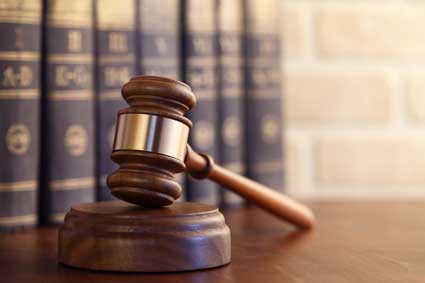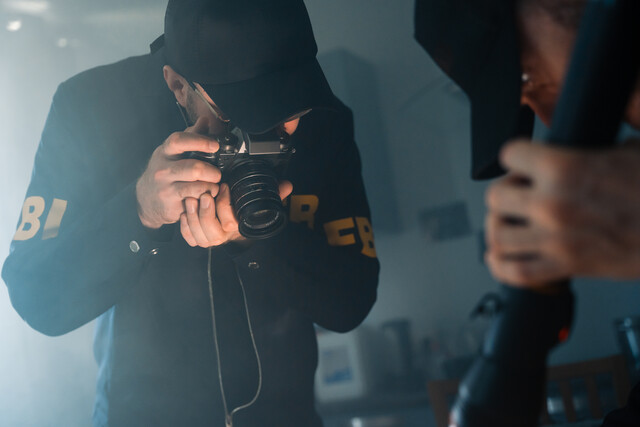Introduction
The discovery of a crime scene is only the beginning to a very thorough, drawn out process to examine, interpret, identify and retrieve physical evidence left behind. While this may seem to be the most complicated part of the crime scene investigative procedure, one more thing is vital to initiate, or anything else that is done at the crime scene may be compromised: protecting the evidence. In order to safeguard evidence and secure the crime scene, barriers must be erected immediately upon arrival.
What is the evidence? How do you protect it? Evidence can come in any shape or form. It can be the body found in a ditch along the side of a road, and it may very well include the vehicle parked a short distance away, or even the skid marks on the road a hundred yards away.
Determining the dimensions of a crime scene can be a simple matter of closing a bedroom door or roping off a square mile of woods. No matter how big or small a crime scene, the crime scene investigator must set one goal above all others: secure the integrity of the crime scene. Only after that is accomplished will it be possible to correctly identify and retrieve evidence according to protocol, which will ensure the evidence will prove valid later on down the line when it comes time for trial.
The extent of the measure of any crime scene can't be set in stone. Every crime scene and situation is different. Indoor scenes require different challenges than outdoor scenes, and crime scene investigators come across a wide variety of situations that test the boundaries of logic.
Ideally, crime scene security can comprise up to three or more levels, depending on circumstances. However, as a general rule, it is wise to always maintain at least three different perimeters around any crime scene:
- Public or outer barrier
- Inner or "command area" barrier
- Core crime scene
At an outdoor crime scene, the first step toward securing a crime scene is to set public barriers. This first barrier, also often called a perimeter containment barrier. This barrier keeps the public well back from any crime scene. This is typically in the form of street barriers or police vehicles that prevent people from moving in or out of a particular area, such as a path or street. For example, a body has been found in a baseball infield of a neighborhood park.
Law enforcement personnel may very well block access to any and all entrances to the park to keep the public and media at bay.
The second barrier is often called the "inner" barrier or "command area". Continuing to use the neighborhood park as an example, this barrier is set some distance inside the first, outer barrier to create even more of a buffer zone between the public and the core crime scene. This second barrier, in this case, might be placed around the area surrounding the baseball field, roping off the bleachers, the entire baseball field, and the dugouts.
The core crime scene is then also cordoned off, completely separating it from the second and third barriers. It has become increasingly common to find red biohazard tape being used to designate and separate the core crime scene from other perimeters. Only vital and necessary investigators should be allowed in the core crime scene. In this case, the body may be laying near Home base, and the core crime scene barrier tape may be strung around the area immediately surrounding home plate, first, second and third base and the backstop.
The core crime scene is where most of the evidence, in most cases, will be found. Better to make this area bigger than smaller. A crime scene log ensures that security in and out of this area remains tight, and it is a good idea to have any law enforcement personnel or crime scene investigators sign in and out upon entering and leaving this area.
Such a crime scene log may list the victim's name, if known, but also names of witnesses, the name of the first responding officer to the scene, as well as paramedics, firemen, detectives and crime scene personnel. Following that, it may also list the arrival of supervisors, the coroner or even a prosecuting attorney or county district attorney. Names, times of arrival and departure and contact information allows a complete record of the time line of the ongoing investigation at the scene of the crime and can provide invaluable information as the investigation progresses.
Unfortunately, many crime scenes, by necessity, have only one barrier to separate the victim from the public. According to many crime scene investigators and technicians, the most frustrating challenge that most crime scenes face is contamination, not by the public at large, but by police officers, detectives and supervisors.
It is vitally important not to endanger the integrity of any crime scene with useless personnel. Lost or compromised evidence makes a crime scene investigator's job harder and can seriously damage investigations. Blood spatter patterns and fingerprints can be inadvertently smudged, footprints or tire treads walked on if care is not taken, and trace evidence can be scattered hither and yon by those unaware of its very presence.
Therefore, a police to restrict unnecessary access to any crime scene should contain the following guidelines:
-
Every officer or investigator at the crime scene should complete a report stating his or her involvement and actions while present at the scene.
- Everyone present within the core crime scene should make available any exemplars for elimination purposes if necessary. This can include hair, fingerprints and shoeprints.
- The officer that is assigned to the main entrance to the crime scene should maintain a sign-in sheet with the names, ranks, arrival and departure times as well as the purpose of every person who enters the perimeter of the core crime scene.
- The commanding officer at the scene should assume the responsibility of who comes into the crime scene.
In many cases, a crime scene may only constitute a primary and secondary area. Whether one, two or three, barriers must be erected in all cases. Yellow barrier crime scene tape is the most recognizable form of restricting access to a crime scene, but ropes, cones, vehicles or anything else on hand may be used in certain circumstances to initially protect a crime scene.
The number of law enforcement personnel needed to secure a crime scene will also vary according to incident and location, as well as manpower. A crime scene investigator may need to deal with a large number of circumstances in which a crime scene has not been properly secured or is in the process of being secured upon arrival. In many cases, a crime scene investigator must erect such barriers on his or her own.
Protecting the integrity of the crime scene also involves securing it against the media. Under no circumstances should any law enforcement officer or crime scene investigator speak to members of the media at a crime scene, and no information should be given to them whatsoever. Only the chief investigator or the detective supervisor in charge of the scene is allowed to divulge any information about the victim or the crime scene, and even then, facts must be very carefully chosen and care taken to always protect the crime scene.
The detective supervisor or homicide detective assigned to the case are in command of the crime scene and have the authority to prevent access to the crime scene by anyone except the coroner or medical examiner.

























